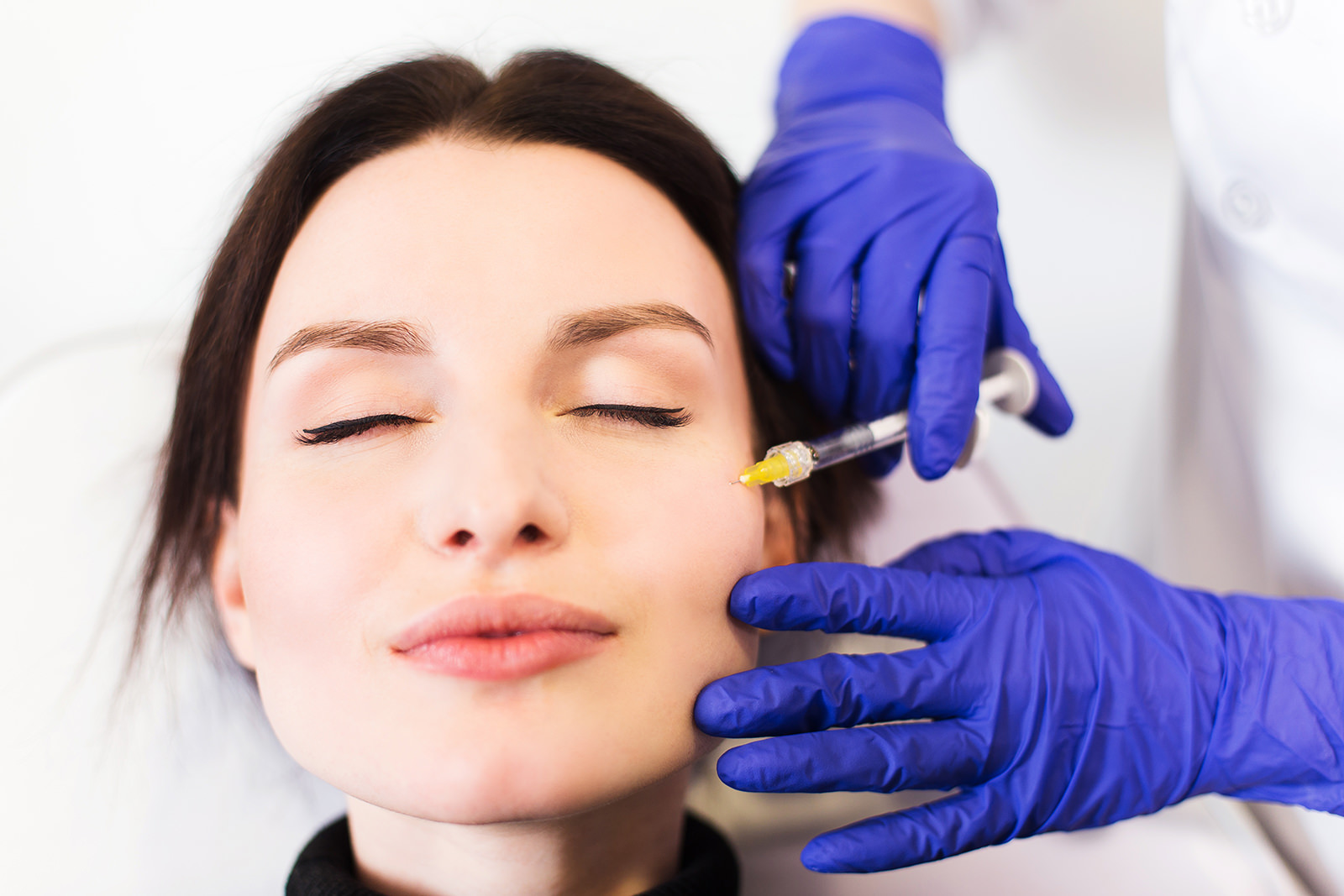What’s the difference between botox and dermal fillers? BY PLASTIC SURGEON Dr Chad Wu IN IRVINE And NEWPORT BEACH, ORANGE COUNTY, CA
Wrinkle treatment options are increasingly abundant. There are numerous over-the-counter products, and people are also turning to their healthcare providers for longer-lasting options. Botulinum toxin type A (Botox) and dermal fillers are both long-lasting treatments. Each procedure can be used for wrinkles, but there are several differences between the two to consider.

Botox and dermal fillers alike may be used to treat wrinkles on the face.
Each treatment is also delivered via injection. Still, both options have slightly different uses.
BOTOX
Botox itself is a muscle relaxer made from bacteria. It’s been on the market for over two decades, and has been used to treat neurological disorders that cause muscle weakness. It’s also used for the treatment of migraines and other medical conditions.
For wrinkle treatment, Botox is primarily used to treat dynamic wrinkles. These wrinkles occur naturally around the eyes and mouth, as well as in between your eyebrows. They become more pronounced with age. Botox injections relax the muscles near these wrinkles. Not allowing the muscles to move reduces the appearance of dynamic wrinkles.
BOTOX IS NOT USED FOR FINE LINES CAUSED BY COLLAGEN BREAKDOWN.
Your healthcare provider will inject the muscles that contribute to the specific wrinkles you want treated. The injection process itself takes just a few minutes with noticeable results within two weeks.
DERMAL FILLERS
Dermal fillers also treat wrinkles on the face. They’re primarily used to treat smile lines, though the fillers can also be used to plump up the lips or cheeks. Sometimes, they’re used for hand treatments or to reduce the appearance of scars. Dermal fillers aren’t approved for plumping up other areas of the body, though, such as the breasts.
Dermal fillers come in different forms, and like Botox, they’re injectable. Some are temporary and used primarily for soft tissues in the face along the smile lines.
The U.S. Food and Drug Administration has approved the following options:
- calcium hydroxylapatite (Radiesse), a temporary gel solution that lasts for 18 months
- collagen, a temporary material that lasts for up to four months
- hyaluronic acid, a temporary material that loses its effect after 6 to 12 months
- poly-L-lactic acid (Sculptra, Sculptra Aesthetic), a man-made material that lasts about two years
- polymethylmethacrylate beads, the only permanent type of dermal filler available
IS BOTOX EFFECTIVE?
Botox injections produce results for most people. Side effects are minimal, and most go away after a short time. You may not notice the full effects of Botox if you have certain conditions that prevent them. You’ll need to talk to your healthcare provider about all these potential risks ahead of time.
Once you receive the injections, you’ll be able to continue your daily activities without any recovery time. The effects of Botox last about 3 to 4 months. Then, you’ll need additional treatments if you want to maintain the results.
HOW EFFECTIVE ARE DERMAL FILLERS?
Dermal fillers are also considered effective, and the results last longer than results from Botox overall. Still, results differ depending on the exact type of filler you choose. Like Botox, you’ll need maintenance treatments once the fillers wear off.
As with all medical procedures, both Botox and dermal fillers can come with the risk of side effects.There are also special considerations to discuss with your healthcare provider if you have preexisting medical conditions. Weigh all the following risks and benefits thoroughly.
BOTOX RISKS AND SIDE EFFECTS
Botox is only recommended for people in good health to reduce the risk of side effects.
Possible side effects include:
- bruises at the site of injection
- drooping eyelids, which can take several weeks to resolve
- eye redness and irritation
- headaches
Taking eye drops before receiving Botox injections may help reduce the chances of some side effects. You should also stop taking any blood thinners a few days before to prevent bruising.
BOTOX ISN’T RECOMMENDED IF YOU:
- are pregnant or nursing
- have weak facial muscles
- currently have skin issues, such as thick skin or deep scars
- have multiple sclerosis or another type of neuromuscular disease
RISKS AND SIDE EFFECTS OF DERMAL FILLERS
Dermal fillers carry the possibility of more risks and side effects than Botox. Severe side effects are rare. Moderate side effects usually go away within two weeks.
SOME SIDE EFFECTS INCLUDE:
- allergic reaction
- bruising
- infection
- itching
- numbness
- redness
- scarring
- sores
In severe cases, long-term swelling of the face might occur. Ice packs can help alleviate temporary numbness and swelling. To reduce the risk of this side effect and others, do allergy testing before getting a dermal filler if it’s recommended for the particular filler.
Dermal fillers are discouraged for people who smoke. As with Botox injections, you’ll receive the best results and fewer side effects if you’re in overall good health.
